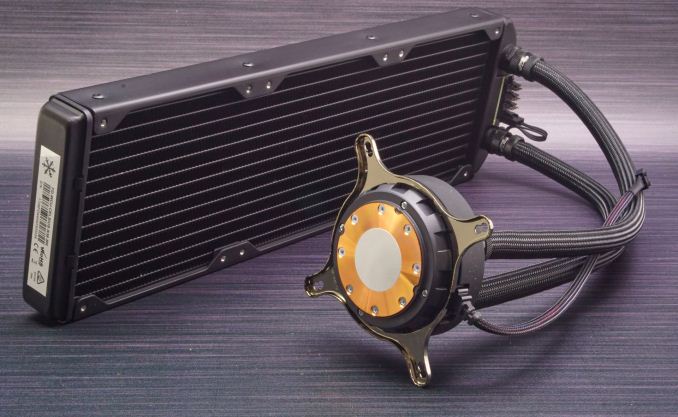The Fractal Design Celsius S24 & S36 AIO Coolers Review
by E. Fylladitakis on June 2, 2017 8:00 AM ESTConclusion
Fractal Design released the new Celsius coolers with the aim of bringing an all-around competitive product into the market while staying true to the company’s motto - “less is more”. The Celsius coolers are aesthetically simple, without RGB lighting and fancy colors; on the contrary, the designer of the Celsius has been trying to make the otherwise large devices as inconspicuous as possible and blending in with the environment inside a high-end PC. The all-black design and the minimal appearance and travel of cables will definitely help advanced users and modders assemble some of the cleanest-looking systems out there.
With that said, no cooler could succeed while focused on aesthetics alone and Fractal Design certainly did not forget about performance. Although the Celsius S24 or S36 will not be breaking any thermal performance records, the Scandinavian coolers seem to deliver very good thermal performance while maintaining exceptionally low noise levels. The ceramic pump is exceptionally balanced, very quiet, with no whining noises coming from it even when it is running at maximum speed. Fractal Design’s Dynamic X2 fans appear to have been an excellent choice for these coolers, providing good performance with relatively very low noise levels.
The discussion on thermal performance becomes complicated not when trying to compare the Celsius coolers to other products, but when trying to compare them between themselves. In our testing, the huge radiator of the Celsius S36 only has a performance advantage when the cooler's fans/pump are running at high speeds, and even then the advantage is apparent only when the thermal load is very high. This scenario hardly makes any sense with a single modern CPU – even one that is heavily overclocked – as even HEDT CPUs don't product the 300W+ of heat it takes to really dfiferentiate these coolers.
On the other hand, with the fan/pump speeds lowered, the Celsius S24 not only delivers just as good of thermal performance as its bigger S36 counterpart, but it actually manages to outperform the S36 during most of the tests, all while producing significantly lower noise levels. We believe that the only scenario that would give the S36 a sizable advantage is the expansion of the kit to cover more energy-hungry parts, but we also feel that the small ceramic pump will be outclassed if it finds itself having to deal with a 400 mm long radiator and multiple cooling blocks. Meanwhile the S36 has the inherent disadvantage of the extra size and higher noise levels that the third cooling fan unavoidably introduces, making it an even less appealing choice. Alone it might be a more interesting cooler, but the S24 performs so well that it puts the S36 in a bit of a tough spot.
Availability of the Fractal Design Celsius in North America is relatively limited, which is not unusual for a product from a European company that has just launched. The Celsius S24 and S36 are currently available in Amazon for $109 and $119 respectively, which are not very competitive prices considering the overwhelming competition that they have to overcome. They may be two of the least noisy AIO coolers that we have ever tested, but retailing that much higher than similar (and very popular) products is not going to help Fractal with their sales. The price of the kits will most definitely come down as more vendors bring in some stock, and the Fractal Design Celsius S24 will most likely become a favorite for users whom prioritize simplicity and quiet operation.
As for the Fractal Design Celsius S36, we will leave it up to the reader to decide if the extra size, noise and cost are worth the slightly better performance under very heavy thermal loads. But, according to our test results, the Celsius S24 definitely is a more sensible choice for most users.












31 Comments
View All Comments
shaolin95 - Sunday, October 28, 2018 - link
Maybe with the 9900k, the S36 could prove the better option?